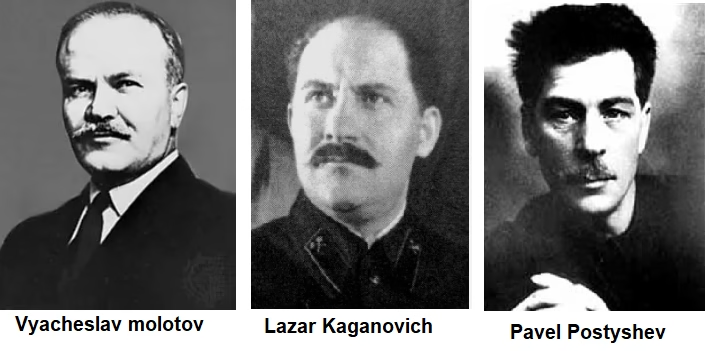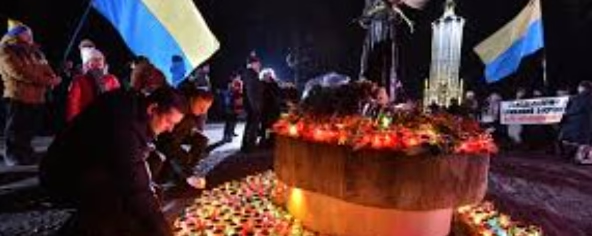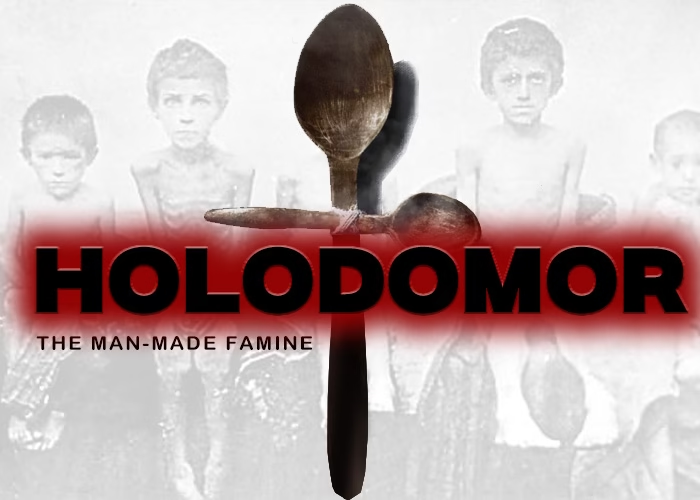The Holodomor was one of the most tragic events in human history. It was a man-made famine that took place in Soviet Ukraine from 1932 to 1933. Millions of innocent people, including men, women, and children, died of starvation. The worst part? The Soviet government tried to hide it from the world.
In this article, we will explore why this famine happened, who was responsible, why the truth was hidden, and how it affected the people of Ukraine.
What Was the Holodomor?
The word Holodomor comes from two Ukrainian words: “holod” (hunger) and “moryty” (to kill). Together, it means “death by hunger.” This famine was not caused by natural disasters like droughts or floods. It was created by the Soviet government, specifically under the leadership of Joseph Stalin.
The Soviet Union took away food from Ukrainian farmers, refused to help starving villages, and made it illegal for people to leave their areas in search of food. As a result, millions of Ukrainians died.
Why Did It Happen?
There were several reasons why the Soviet government created this famine:
- Collectivization – Stalin wanted all farmers in the Soviet Union to work on collective farms (government-controlled farms) instead of owning their own land. Ukrainian farmers, called “kulaks,” resisted this policy because they wanted to keep their land and produce their own food.
- Punishment for Ukrainian Nationalism – Many Ukrainians wanted independence from the Soviet Union. Stalin saw this as a threat, so he decided to weaken Ukraine by taking away its food.
- Forced Grain Requisition – The Soviet government took huge amounts of grain from Ukraine and sent it to other parts of the USSR or exported it to foreign countries. This left Ukrainian villages with nothing to eat.
- Fear of Rebellion – Stalin was afraid that Ukrainians might revolt against his rule. By starving them, he made sure they were too weak to fight back.
Who Was Responsible?
The main person responsible for the Holodomor was Joseph Stalin, the leader of the Soviet Union at the time. However, he was not the only one involved. Other Soviet officials played important roles in carrying out this famine:
- Vyacheslav Molotov – Stalin’s close associate, who helped enforce grain seizures from Ukraine.
- Lazar Kaganovich – A top Soviet official who led brutal policies against Ukrainian farmers.
- Pavel Postyshev – A Soviet leader who helped control Ukraine and suppressed any attempts to report the famine.

These men followed Stalin’s orders to take food away from Ukrainians, block aid, and silence those who tried to speak out.
How Did the Soviet Government Hide It?
The Soviet government took extreme steps to hide the famine from both its own people and the rest of the world. Here’s how they did it:
- Censorship – Newspapers and radio stations were banned from talking about the famine. Any journalist who tried to report it was either arrested or killed.
- Foreign Reporters Misled – The Soviet government invited foreign journalists and showed them only areas where there was enough food. Reporters who told the truth, like Gareth Jones, were discredited and silenced.
- Punishing Those Who Spoke Out – Ukrainians who talked about the famine were labeled as enemies of the state. Many were arrested, sent to labor camps, or executed.
- Fake Statistics – The Soviet government changed population records to make it seem like fewer people had died. They even removed starvation as a cause of death on official documents.
Who Were the Victims?
The famine mostly affected Ukrainians, but some other ethnic groups also suffered.
- Ukrainian Farmers – Since they grew food, they were the first to be targeted. The government took everything they had, leaving them to starve.
- Children – Thousands of children died from malnutrition, while many were abandoned by desperate parents who could no longer feed them.
- Religious Leaders – The Soviet Union saw churches as a threat, so many priests and religious figures were arrested or killed.
- Ukrainian Intellectuals – Writers, teachers, and historians who spoke about Ukraine’s history and culture were punished to erase Ukrainian identity.
Affected Areas
The famine struck hardest in rural Ukraine, but other regions also suffered, including:
- Kyiv, Kharkiv, Dnipropetrovsk, Poltava, and Odesa regions in Ukraine.
- Kuban region in southern Russia, where many ethnic Ukrainians lived.
- Parts of Kazakhstan and the Volga region, though the famine was not as severe there as in Ukraine.
How Many People Died?
Historians estimate that between 3.5 to 7 million people died during the Holodomor. Some believe the number could be as high as 10 million.
The Aftermath
The Holodomor left deep scars on Ukraine:
- Population Loss – Millions of deaths meant Ukraine’s population took decades to recover.
- Fear and Trauma – Survivors lived in fear of the Soviet government and passed their stories down in secret.
- Destroyed Culture – The Soviet Union tried to erase Ukrainian traditions and identity.
- Denial of the Truth – The Soviet government continued to deny the famine for many years.
Recognition of the Holodomor
For decades, the world did not acknowledge the Holodomor because the Soviet Union denied it ever happened. However, in recent years, many countries have recognized it as a genocide, including:
- Ukraine (declared it a genocide in 2006)
- United States
- Canada
- Poland
- Germany
- Australia
Today, Ukraine commemorates Holodomor Memorial Day every year on the fourth Saturday of November.

Conclusion
The Holodomor was one of the darkest chapters in history. Millions of Ukrainians died not because of bad weather or lack of food, but because of a cruel policy enforced by the Soviet government. Stalin and his officials deliberately starved innocent people to crush Ukrainian resistance.
For many years, the world did not know about the Holodomor because the Soviet Union covered it up. However, the truth can never be hidden forever. Today, more and more people are learning about this tragedy and remembering the victims.
By understanding the Holodomor, we can ensure that such crimes never happen again. The memory of those who suffered must be kept alive, and history must never be forgotten.
Thank You for Reading
Thank you for taking the time to learn about the Holodomor. Remembering the past helps us build a better future. “History remembered is history that cannot be repeated.”

